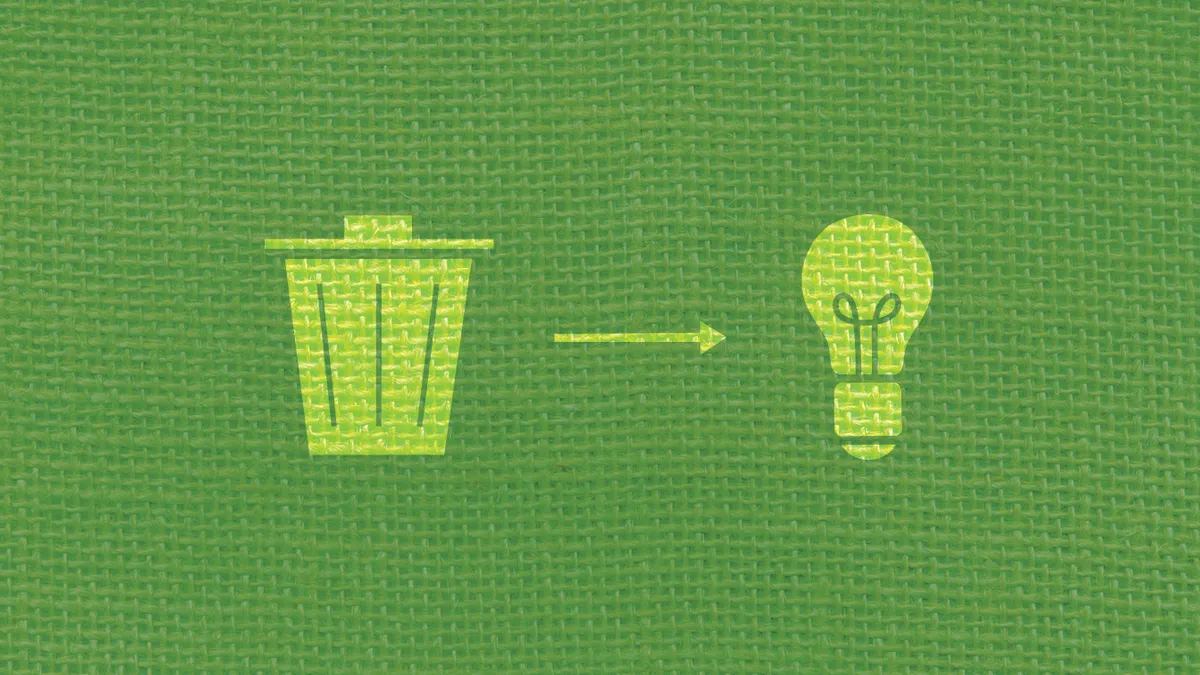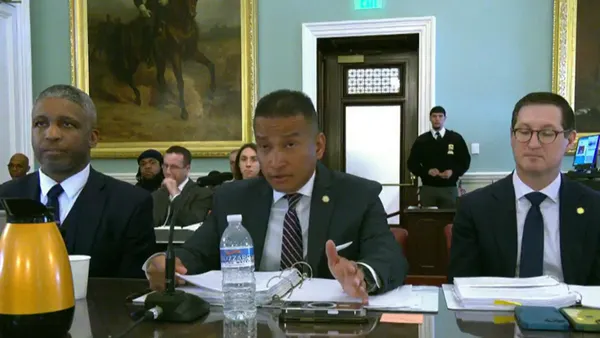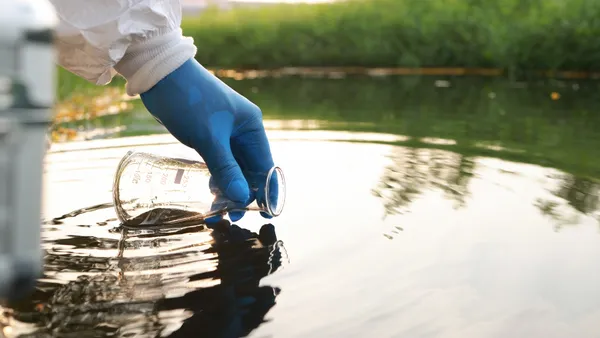UPDATE: October 3, 2019: The Department of Energy recently selected 35 projects to receive $73 million worth of bioenergy research and development funding. This includes multiple projects relevant to the waste and recycling industry.
Colorado State University will receive the highest grant in any category (nearly $5.1 million) for a project that aims to "valorize wet organic waste by using cheap, renewable electrons to drive targeted pathways in anaerobic digestion." Funding will also go to two other projects focused on "rethinking anaerobic digestion" and four on "plastics in the circular carbon economy."
Dive Brief:
- The U.S. Department of Energy (DOE) announced $79.3 million in funding for bioenergy research and development earlier this month. The department expects to award between 28-49 grants, with amounts up to $10 million. The first application deadline is June 3.
- Of the 10 areas of interest (AOI), some of the most relevant to the waste industry are renewable energy from urban and suburban wastes, designing "highly recyclable plastics," and "rethinking" anaerobic digestion.
- Funding from DOE's Bioenergy Technologies Office is meant to bolster the United States' ability to remain competitive in "the emerging bioeconomy," with a focus on "terrestrial and algal biomass, biogas, and other waste streams." This announcement also supports the "Water Security Grand Challenge," because of its focus on anaerobic digestion.
Dive Insight:
This announcement stands out in part because waste-related topics are not always a priority in national funding and the biogas market has grown at a slower pace than many other renewables. Provisions in the new Farm Bill, as well as new small-scale EPA funding for AD research, are early signs that is beginning to change. As referenced in the DOE proposal, this is all part of an evolving landscape in the U.S. waste and recycling sector that could have untapped potential.
"Limited landfill capacity, increasingly stringent disposal regulations, and related issues associated with landfilling are necessitating novel waste management solutions. In particular, the notion that waste streams represent valuable feedstocks for the production of bioenergy and bioproducts is gaining currency," reads the funding document. "Waste streams represent a significant and underutilized set of feedstocks for biofuels, bioproducts, and biopower. They are available now, in many cases represent a disposal problem which constitutes an avoided cost opportunity, and are unlikely to diminish in volume in the near future."
This sense of opportunity is manifested in the department's anticipated award schedule, in which projects involving "urban and suburban wastes" have the highest minimum anticipated funding level for one project of any category at $5 million. Overall, DOE anticipates spending up to $10 million on projects in the category.
Acceptable feedstocks for this particular AOI include biogas, carbon dioxide/flue gas, post-sorted MSW, and wet waste. It notes that different parts of the waste chain can be feedstock for producing energy and wants projects that do not lead to, biogas, hydrogen or ethanol as an end product. The research area recognizes that several waste product feedstocks, including landfill gas, fats and grease and organics from MSW have much more potential than is being captured.
The AOI dealing with plastics in the circular economy, with potential funding of up to $5 million, wants bio-based plastics that may be easier to break down into component parts through chemical recycling. This area of study has gained increasing traction in the private sector recently. The AOI also wants to focus on "difficulties with plastic degradation and upcycling."
The AOI on rethinking AD, with potential funding of up to $5 million, recognizes that potential energy from feedstocks goes uncaptured, and says the economics of AD are difficult for operations at scales smaller than five dry tons per day. This acknowledged difficulty is what the AOI appears to want applicants to focus on and DOE is encouraging applicants to consider ways to reduce disposal costs associated with AD.
The DOE has set a June 3 deadline for concept papers, and July 22 for full applications, with approvals expected in the fall.













